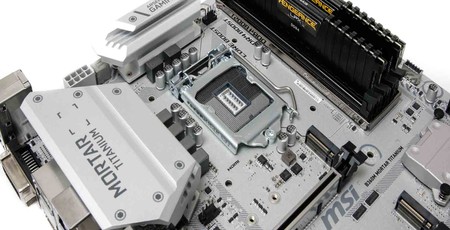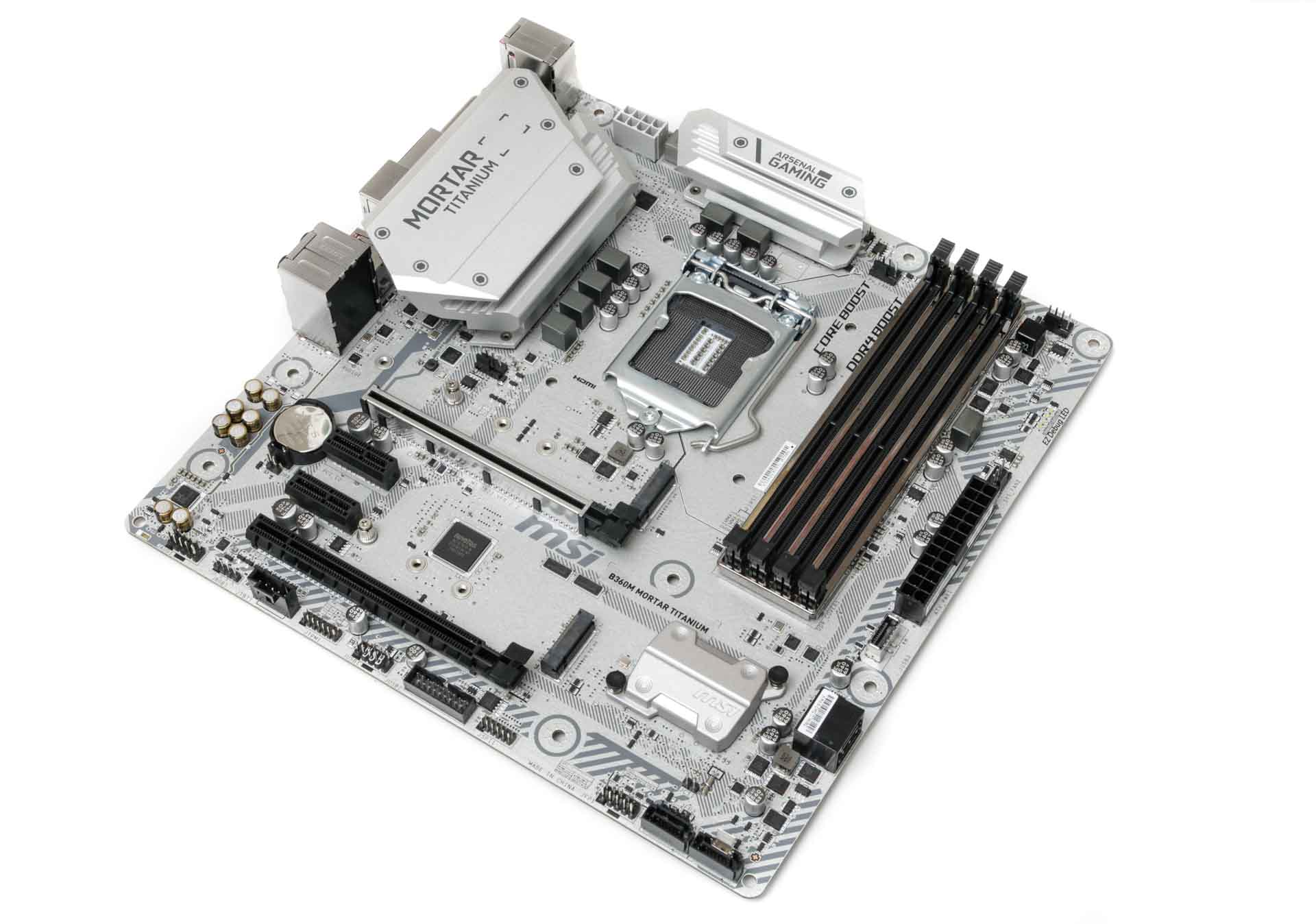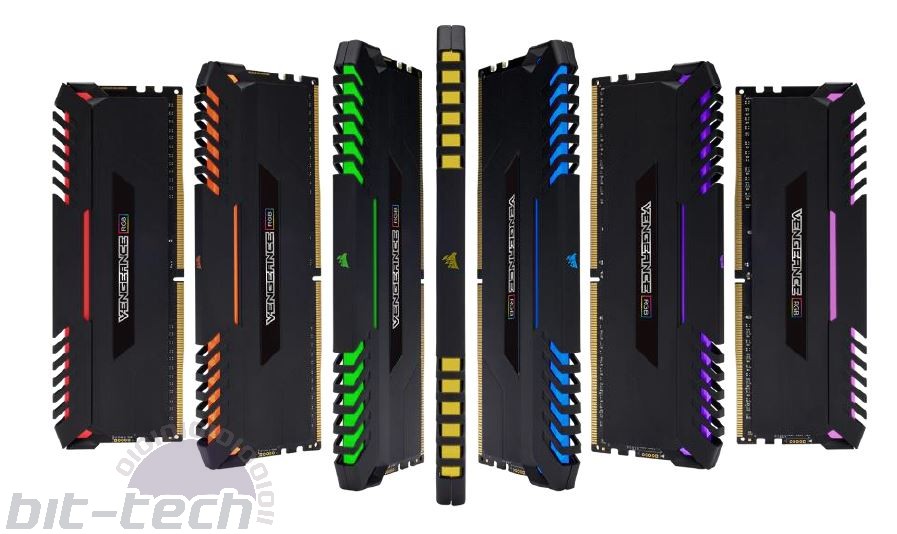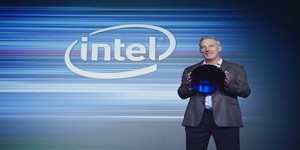
Not everyone wants to overclock their processor, and if you build PCs for friends and family, you've probably built a few stock speed rigs yourself. Even if meddling in the dark arts of overclocking doesn't terrify you, though, there are other reasons to consider building a system around a stock speed CPU. Motherboards such as MSI's B360M Mortar Titianium are considerably cheaper than their Z370 counterparts yet sport similar features, and it's the same for other non-Z-Series chipsets too. At the very least they offer you the ability to build a system with the latest high-end hardware and lack little compared to more expensive chipsets.
There are plenty of enthusiasts out there that just want to get up and running with a gaming PC and don't care about the added fluff such as EFIs, RGB lighting, or software features - they just want to build their rig as quickly and cheaply as possible. Outside of gaming systems, these cheaper motherboards are vital, too. Home theatre PCs or super-low budget systems completely rely on the sub-£100 motherboard market, and to be honest, you don't need anything more to power Intel's latest hexa-core CPUs.

There are two issues, though, with Intel's position at the low end. Firstly, it's very late. Coffee Lake landed months ago, yet we're only now seeing cheaper chipsets and motherboards for its new CPUs, meaning until now you either had to buy a more expensive Z370 motherboard or opt for Intel's older generation kit. The latter option might not have sounded so bad to those on a budget, but there was a big issue in terms of price. For example, you'd pay an extra £40 or so for a Core i5-7400 compared to a very similar Core i3-8100 - a very good reason to have held off buying the older kit, even though motherboards were much cheaper. If you wanted a budget quad-core system, the best thing to have done would have been to wait for Intel to launch these cheaper Coffee Lake-compatible chipsets, but it's been a frustratingly long wait.
The bigger issue is, of course, AMD. If you wanted a budget quad-core system, AMD has had the tools for the job since Ryzen's launch a year ago, although we had to wait a little while for the Ryzen 3 and Ryzen 5 quad-cores to appear. Intel did the right thing in making its Core i3 desktop CPUs quad-cores, but in the case of the Core i3-8100 especially, the lack of motherboards below £100 until very recently must have hurt sales of not only this otherwise great CPU but the Core i5-8400 as well. The latter is something of a bargain now that there are cheaper motherboards around and has seen price drops, so it now costs less than £140 for a decent hexa-core multiplier-locked CPU. AMD has had to cut prices as well, and now there's the choice of two hexa-core CPUs - the Core i5-8400 and Ryzen 5 1600 - for around £140, and both Intel and AMD finally have boards costing as little as £50 for them both - it's s shame this took so long.

I do have other concerns, though, most notably with memory speed. AMD's cheaper chipsets such as A320, support memory overclocking, which means that you can benefit from the small differences in price between the likes of 2,400MHz and 3,000MHz kits to improve the CPU's performance thanks to the fact AMD's Infinity Fabric is linked to memory speed. Memory tweaking is working far better a year later on AMD systems, and I regularly see speeds in excess of 3,400MHz, which is great news. Intel, however, only allows memory overclocking on its Z-Series chipsets, and as we saw with the MSI B360 Mortar Titanium, while you can apply an XMP for 3,000MHz memory, you'll be limited to the platform's standard limit of 2,666MHz. Admittedly, there's not much difference on Intel systems performance-wise between 2,666MHz and 3,000MHz, but as the cost between them is so small, it's a shame higher frequencies aren't supported. Given how long DDR4 has been around, it's likely most people will have kits to transplant from older systems too.
What I find strange is, given how solid memory overclocking is on Intel systems these days, that the company doesn't allow it outside of its premium chipsets. I'd even go as far as saying that applying a memory profile in the EFI is so easy to do and so commonplace, as is overclocked memory itself, that I don't even consider it overclocking any more. In fact, I can't see any reason why it shouldn't allow motherboard manufacturers to offer memory overclocking on cheaper chipsets given the relatively small gains it provides and the fact that the vast majority of us opt for the likes of Z370 in order to overclock our CPU, not the memory.
There's also the issue that if you bought an AM4 motherboard a year ago, it can still be used with AMD's upcoming second-generation Ryzen CPUs, whereas we all know what happened with Coffee Lake. Something Intel could have considered here is allowing quad-core Coffee Lake CPUs to work in H270 or B250 motherboards (as well as Z270). Having the likes of the Core i5-8600K and Core i7-8700K being limited to Z370 would still have been a decent enough draw and would have alleviated some of the negativity it faced when we learned it had been rather sneaky, but also would have given lower-budget users a less arduous way to upgrade, and it might even have improved sales of its low-end Coffee Lake CPUs as well. Of course, it opted for the money-making option, and who can blame it, but the end result has been that the otherwise excellent Core i3-8100 and Core i5-8400 simply haven't been high in my list of recommendations.

MSI MPG Velox 100R Chassis Review
October 14 2021 | 15:04








Want to comment? Please log in.